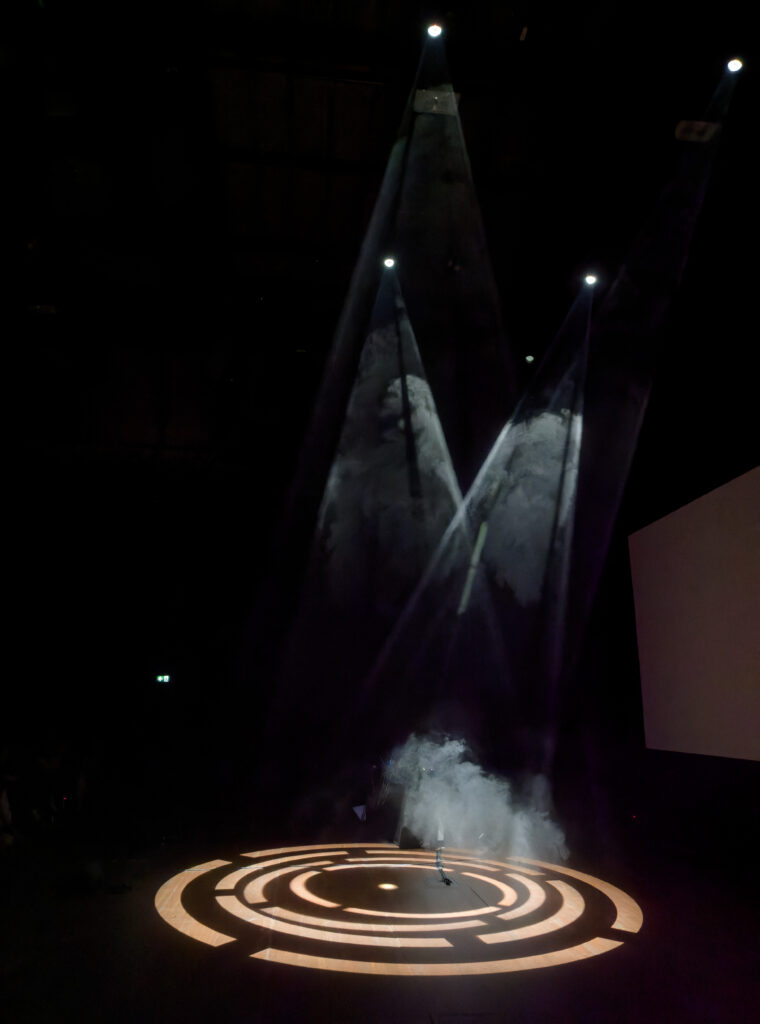Do Female-Oriented Festivals Come with An Expiration Date? Heroines of Sound 2023
The Heroines of Sound festival has always been dedicated to spotlighting women who push the frontiers of electronic music. By pairing works from early pioneers who shaped the genre with compositions from younger generations, the festival has been actively addressing the gender imbalance within the industry. Building upon this foundation, the artistic director Bettina Wackernagel and her curatorial team have expanded their focus to include not only women but also non-binary artists and marginalized ethnic groups.
For the 10th anniversary of the Berlin event, the organizers highlighted themes such as noise, drone, and microtonality, with French composer Pascal Criton as one of the headliners. Across the four festival days, the repertoire aimed to reflect different narratives and was accompanied by workshops, exhibitions, and panel discussions. However, the classical music concert format dominated the festival, making it challenging to sit through hours-long events, especially given the hot weather and delayed performances. The selection of works followed a logic of grouping similar instruments, like Ensemble KNM’s performance with five compositions for low-pitched instruments or the all-electric guitar program on the final day.
This year’s program surprised me with its blurry curatorial frame and left me wondering: Can this selection of composers, performers and the heavy conceptual superstructure surrounding their works really attract new audiences? The lack of a broader context that could explain or establish the links between the artists made it hard for me to deeply engage in investigating correlations or connections without curatorial hints. At the same time, there was music that truly grabbed my attention like the climate- and nature-related pieces by Kirsten Reese and Ale Hop.
Many concerts were focused on length and loudness, pushing the physical boundaries of the sonic world. This was evident in the grand opening, which strove to break free from the confines of the traditional concert setting and channel the spirit of a rock band. The concert featured five works performed by the Black Page Orchestra, a Viennese ensemble known for challenging human hearing. However, they took an intriguing turn by starting with the strikingly intimate composition Virus #2.5 Minimal Shift for percussion, cellos, and double basses (2019) by Austrian electronic pioneer Elisabeth Schimana.
Musicians placed around the audience in the hall of Radialsystem, each paired with loudspeakers, interpreted the sounds of the live-generated audio score on their instruments, re-examining space, communication and temporality. I could simultaneously hear the score and the musicians’ responses, all from different angles. Given how successful this performance was, I find myself questioning: Why not continue expanding the boundaries of music-curatorial thinking beyond traditional clichés?

Black Page Orchestra, Elisabeth Schimana, Virus #2.5 Minimal Shift, fot. © Udo Siegfriedt 2023, @ Heroines of Sound Festival 2023
On the same evening, I also had the opportunity to hear another composer who went beyond stereotypical compositional practices. The work ( (mno.go) ) for amplified ensemble, live electronics and video (2021) by Maja Bosnić began with a hearing protection warning. Yellow earmuffs, distributed among the audience just before the concert, induced tension but also built a sense of togetherness. I felt like I wasn’t the only one in the audience who expected something painful to happen. Bosnić draws inspiration from everyday objects and situations, seeking beauty in non-musical sounds. Playfulness is also an essential aspect of her work, although in this case it was somewhat concealed and enveloped by ear-splitting sounds. For instance, massive tone clusters reverberated as the pianist, wearing ski gloves, mashed his palms and elbows on the instrument. There were also scratchy, rustling noises of strings produced by circular bowing on the bridge and colorful tiny tones of contrabass flute multiphonics. All these distinct microtones combined to create a dream-like, distorted, and vibrating sound mass.
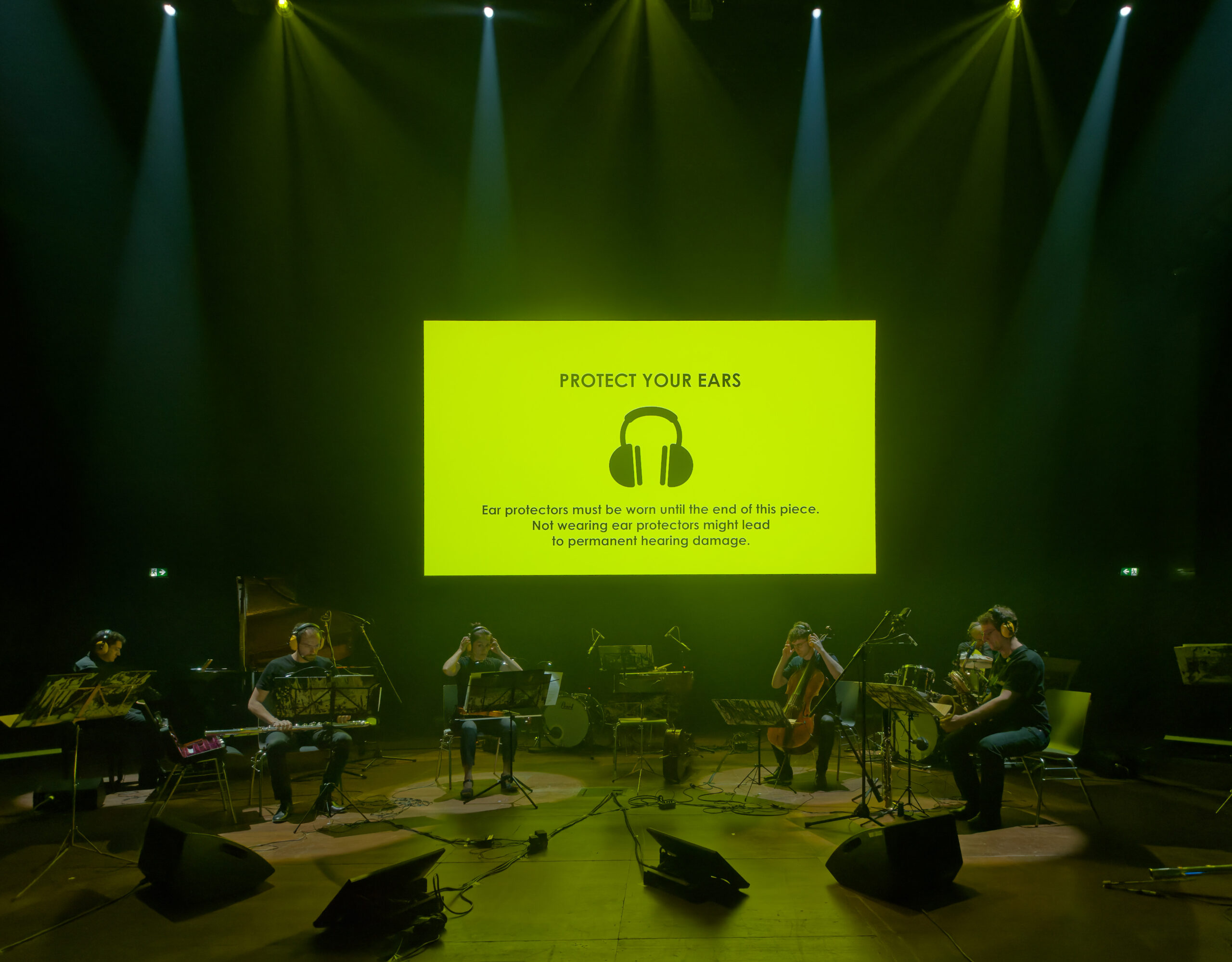
Black Page Orchestra, Maja Bosnić, ( (mno.go) ), fot. © Udo Siegfriedt 2023, @ Heroines of Sound Festival 2023
Another piece featured at the Black Page Orchestra concert came from the Iranian-born, Vienna-based composer Rojin Sharafi. Her musical vocabulary comprises a blend of noise, techno, pre-recorded sounds, and electronic music, reflecting her sensitivity to complex timbre textures. Her daring composition Ask my Ash for saxophone, violoncello, percussion, and electronics (2017) incorporates prerecorded folk tunes that the composer collected in Iran. It was also rich with microtonal sounds of instruments intertwined with twisted and broken electronic glitches. Sharif’s music not only echoed history but also reinvented her heritage, infusing it with a contemporary twist.
The premiere work Mesh for ensemble, electronics, and video by Billy Roisz maintained the hazy atmosphere and concluded the evening with the Black Page Orchestra. The radical Viennese composer and filmmaker delved into the interplay between sound and video. In her new frenetic work, she melded low frequencies – recalibrating my body and mind – with techno beats and the brute dissonances of instruments stretched to their limits, all accompanied by a video featuring a dynamic pattern of vivid checks. The musicians interpreted all works in a rebellious and distinctive manner. Their concert was the most coherent and compelling in terms of curating.

Black Page Orchestra,Billy Roisz, Mesh, fot. © Udo Siegfriedt 2023, @ Heroines of Sound Festival 2023
One of the most intriguing and impactful curatorial gestures of the whole festival, however, involved pairing two works: Senderos de luz y sombras by the grand dame of France’s Groupe de Recherches Musicales (GRM) Beatriz Ferreyra, along with the premiere live act Why Don’t You Love Me? by Polish interdisciplinary artist Martyna Poznańska, who skillfully brought together text, voice, electronic music, and field recordings. Each piece this evening explored an extensive array of electroacoustic possibilities, drawing my attention to shimmering realms of modulations and mercurial narratives. Ferreyra’s 16-channel composition, inspired by the universe’s beginning, was a meticulously crafted, immersive journey through the cosmos. In contrast, Poznańska’s music unfolded gradually in time, bringing forth associations with nature and identity.
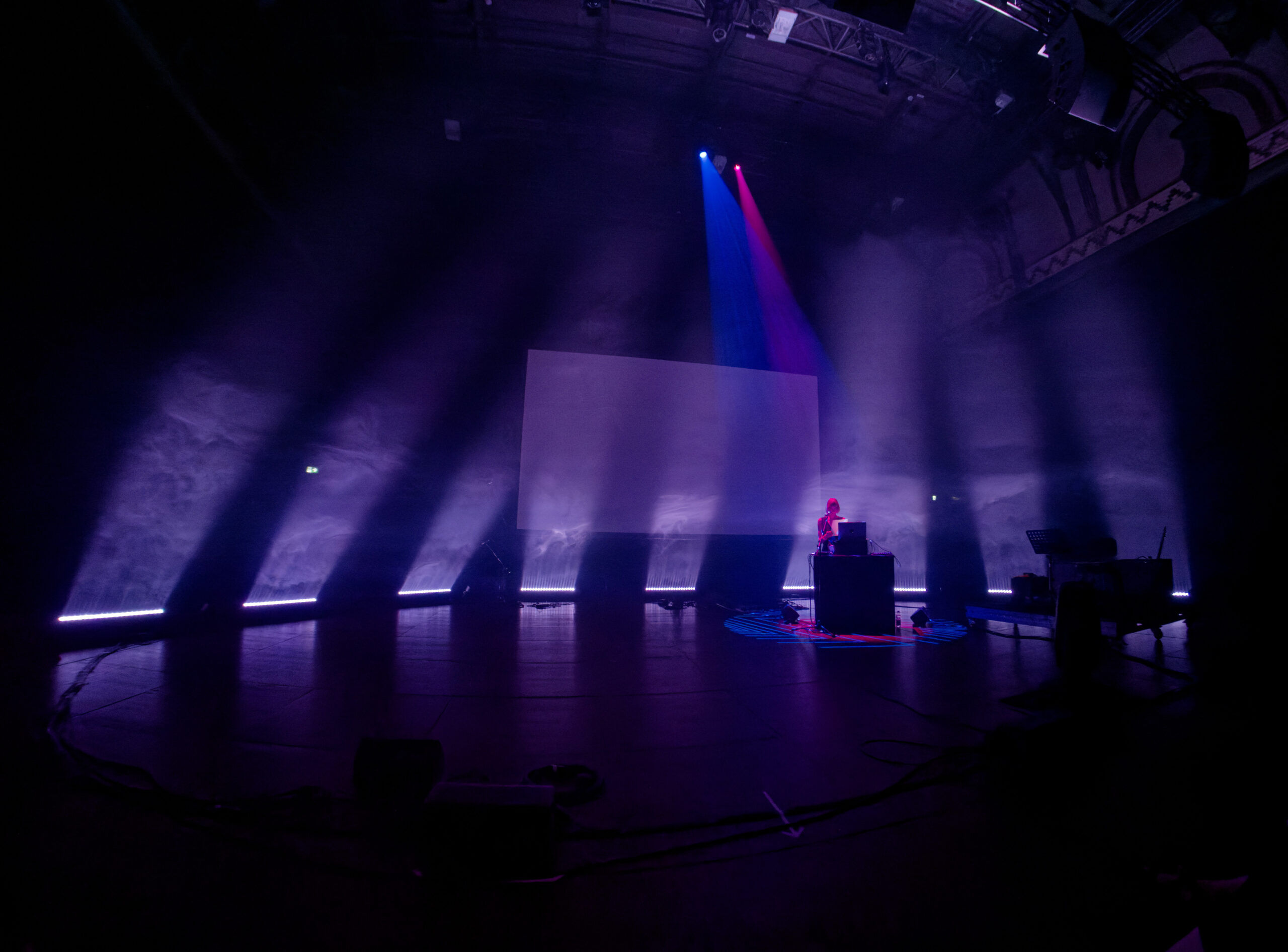
Martyna Poznańska, Why Don’t You Love Me?, fot. © Udo Siegfriedt 2023, @ Heroines of Sound Festival 2023
The festival’s most radical guitar experience came from Peruvian experimental instrumentalist Ale Hop. Her deeply emotional premiere live show left me struck by its sonorous qualities of real-time sampled noises, constructing a dense sound mass, complemented by a variety of guitar techniques, all accompanied by a video highlighting the climate crisis. Ale Hop’s performance stood out among the many centered around the electric guitar and electronics on the festival’s final day.
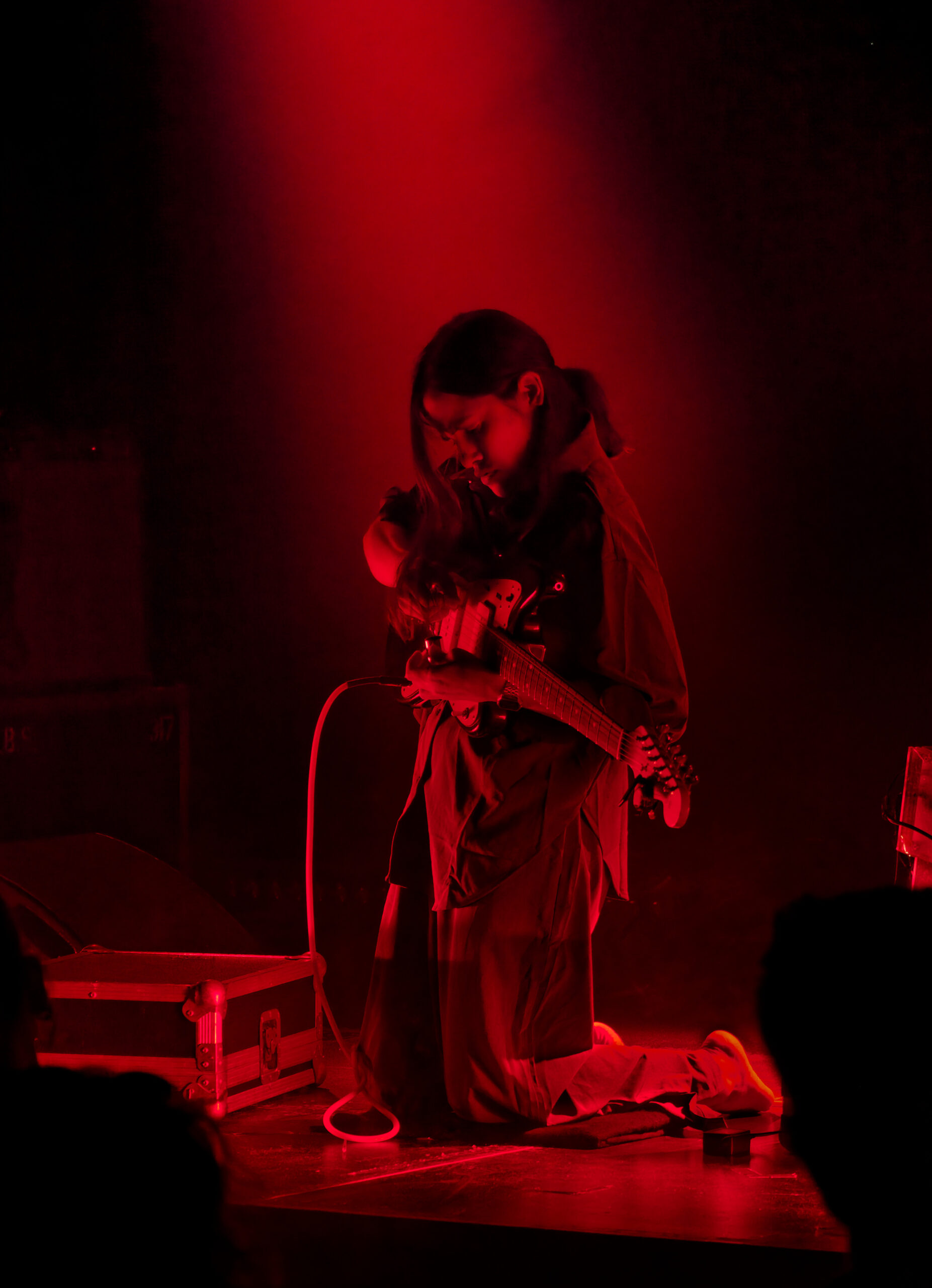
Ale Hop, fot. © Udo Siegfriedt 2023, @ Heroines of Sound Festival 2023
Despite the abundance of nuance in the music, which was full of trance-inducing sonic universes demanding focus and concentration – as evident in Maya Shenfeld’s closing premiere live act – the day’s concert-packed schedule made it challenging to fully absorb and appreciate the intricacies of her sonic craftsmanship. The same difficulty arose during the performance by guitar duo santorsa~pereyra, who navigated tangled wires, knobs, buttons, and instruments. They presented the magnetic piece The light fell on the wall, where limpidity like gauze, she opened her eyes by Yoko Konishi’s, among others.
The same perceptual challenge was evident in the performance by Ensemble KNM Berlin. They presented five pieces scored for low-pitched instruments, some accompanied by video. Four out of the five pieces were part of the ensemble’s project made in collaboration with the Frequenz Festival (Kiel) and SPOR Festival (Aarhus), which involved commissioning works from female composers from various European countries. The goal was to build bridges between different artistic spheres, and I believe this would have been more effectively achieved if the ensemble had included a heterogeneous group of instruments, offering the composers greater artistic freedom and listeners a more diverse sound palette.
The visual appeal of Apotheosis by Norwegian composer Tine Surel Lange could potentially make it a greater fit for film, rather than music, festivals. While the music took on a secondary role, serving to interpret the visual layer and enhance the emotional ambiance, placing it in the middle of the program provided a refreshing contrast. The piece explored themes related to nature and its interaction with human influence, much like the preceding unknown wuuhing sound for contrabass clarinet, electric guitar, violoncello, double bass, biophonic/geophonic ocean sounds, and video (2023) by Kirsten Reese. The composer incorporated elements of the underwater soundscape, such as whale moans, sounds of glaciers, ice, and rain, blended with electronic gurgles, burbles, distortions, and pulsating instrumental microtones into her music, sparking my imagination.
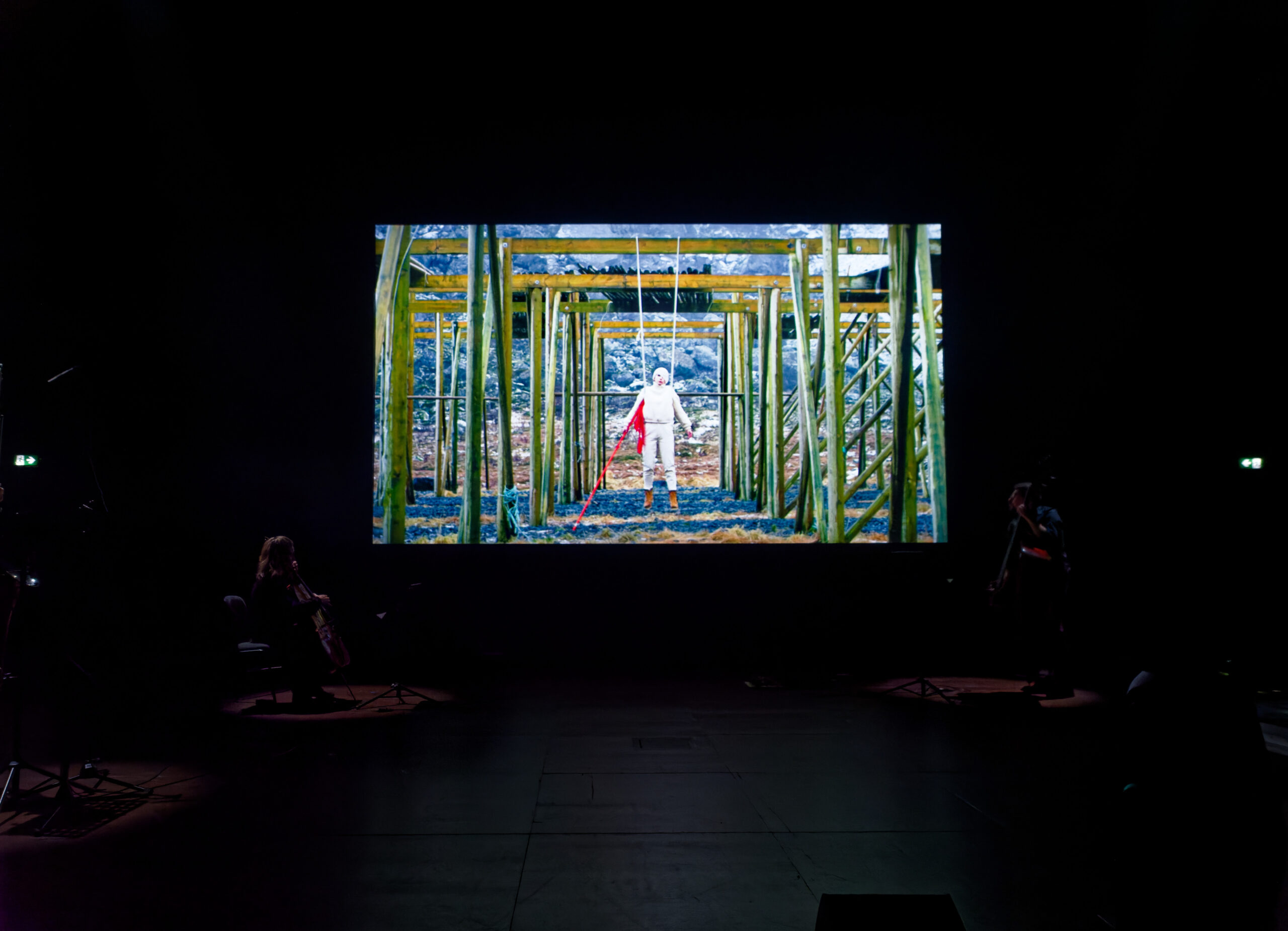
Ensemble KNM Berlin, Tine Surel Lange, Apotheosis, fot. © Udo Siegfriedt 2023, @ Heroines of Sound Festival 2023
Another perspective on the selected instruments was offered by Polish composer Monika Szpyrka in her work Internal Monologue for ensemble, electronics, and video (2023). It was like a very personal invitation to dive deeper inside. The gentle waves of softly and slowly shifting timbers and shimmering glissandos, interrupted by high-pitched electronic sound, could also serve as a meta-commentary for the entire festival: subtle transformations, though not always immediately visible, possess the power to enact change and create their own distinct world. The piece was exceptional; however, it might have resonated differently within a more diverse program.
Critiquing a festival that aimed to enhance female visibility is a challenging task. But it has become clear to me that we need a new perspective – one that is more inclusive to listeners and open to all genders and ethnicities, transcending the borders of Germany and Europe and addressing the polarized society. Focusing on just one part of the story – which in the case of the Heroines of Music festival mainly means rediscovering forgotten female voices – creates a one-sided narrative, which might be conceptually attractive, but lacks broader context. This year’s program demonstrated what we lose when we exclude composers based solely on gender, the gender gap present at many festivals notwithstanding. For example, adding historical context or pairing works by female pioneers with their male counterparts would provide a more comprehensive celebration of women’s achievements. There is a growing need to promote equality, and listeners are ready to follow it. Now it’s the Heroines’ of Sound turn to lead the way.


